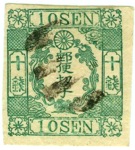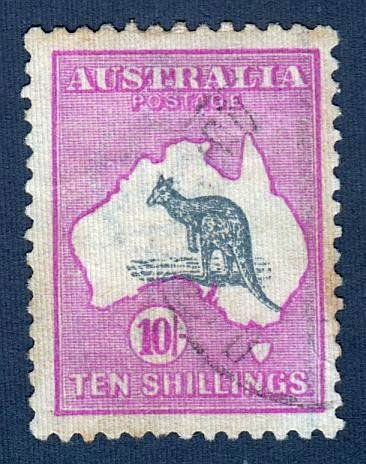
Discussion - Member to Member Sales - Research Center

Discussion - Member to Member Sales - Research Center


Login to Like
this post
1200X2400 is more than adequate, and you certainly don't have to spend a fortune or anything even close. About seven or eight years ago I bought a an Agfa Snapscan e40 with the same resolution for about $130 or thereabouts. Hundreds (thousands?) of scans later, it's still working perfectly and producing excellent images.
About all that more money will you is a faster machine, and one with more bells and whistles. Slide- and negative-scanning ability might be a plus to look for, assuming you have negatives and slides.
Bob

Login to Like
this post
lol, no negatives or slides. just stamps and post cards. And this one is brand new retails for $49.99

Login to Like
this post
Hi Konstantin:
For $50, you can't go wrong. 1200 DPI is going to be plenty if you want to do some large close-up images, but scanning several stamps at once takes a LONG time at high res. I've found 600-900 to be more than adequate. Scanning individual stamps isn't too bad, but it'll still take some time.
What do you plan to do with the scans?
BG

Login to Like
this post
Resolution is dependent upon where the images will be used; internet sites are around 72 dpi, so if that's final destination, you need to go higher (although none will be that low). if you want to fly speck stamps, go as high as you can get. Speed is dependent upon computer's MHz more than anything.
David

Login to Like
this post
I've begun scanning images as tiffs at 300 dpi (sufficient for all but the most demanding commercial printing jobs), with the largest practical dimensions. My scanned images usually come out at anywhere between 20 and 40 Mb. For use on the internet, I always resize and then compress them with Photoshop or Photoshop Elements (which turns them into jpegs). I always try to save the original tiff files; every time you alter a jpeg and resave it, it loses detail (which is why jpegs are called "lossy" images).
Here's an example, reduced in dimensions and compressed for use on this discussion board:

The original 300 dpi TIFF image was 1837 X 1320 pixels, and provides detail like this:

Bob

Login to Like
this post
10:00:22am
Hey guys, i'm thinking about purchasing a new scanner for the hobby. I don't want to spend a fortune, but i want a high quality scanner. Whats the minimum resolution that i should look at? (I saw a nice cannon thats 1200x2400 dpi, should i go for something with higher rez, or will this one be alright?? I haven't shopped for a scanner in years)

Login to Like
this post
10:07:51am
re: Desirable scanner resolution
1200X2400 is more than adequate, and you certainly don't have to spend a fortune or anything even close. About seven or eight years ago I bought a an Agfa Snapscan e40 with the same resolution for about $130 or thereabouts. Hundreds (thousands?) of scans later, it's still working perfectly and producing excellent images.
About all that more money will you is a faster machine, and one with more bells and whistles. Slide- and negative-scanning ability might be a plus to look for, assuming you have negatives and slides.
Bob

Login to Like
this post
12:33:21pm
re: Desirable scanner resolution
lol, no negatives or slides. just stamps and post cards. And this one is brand new retails for $49.99

Login to Like
this post
10:08:18am
re: Desirable scanner resolution
Hi Konstantin:
For $50, you can't go wrong. 1200 DPI is going to be plenty if you want to do some large close-up images, but scanning several stamps at once takes a LONG time at high res. I've found 600-900 to be more than adequate. Scanning individual stamps isn't too bad, but it'll still take some time.
What do you plan to do with the scans?
BG

Login to Like
this post
02:27:52pm
re: Desirable scanner resolution
Resolution is dependent upon where the images will be used; internet sites are around 72 dpi, so if that's final destination, you need to go higher (although none will be that low). if you want to fly speck stamps, go as high as you can get. Speed is dependent upon computer's MHz more than anything.
David

Login to Like
this post
05:20:16pm
re: Desirable scanner resolution
I've begun scanning images as tiffs at 300 dpi (sufficient for all but the most demanding commercial printing jobs), with the largest practical dimensions. My scanned images usually come out at anywhere between 20 and 40 Mb. For use on the internet, I always resize and then compress them with Photoshop or Photoshop Elements (which turns them into jpegs). I always try to save the original tiff files; every time you alter a jpeg and resave it, it loses detail (which is why jpegs are called "lossy" images).
Here's an example, reduced in dimensions and compressed for use on this discussion board:

The original 300 dpi TIFF image was 1837 X 1320 pixels, and provides detail like this:

Bob

Login to Like
this post

